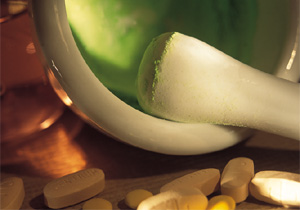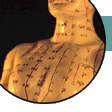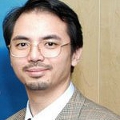The Theory of Channels and Collaterals
The theory of channels and collaterals is an important component
of the theoretical system in traditional Chinese medicine. It
covers the physiological functions and pathological changes of
the channels and collaterals, their interrelations with the zang-fu
organs, and is essential in guiding clinical practice, especially
acupuncture treatment.
The Formation and Functions of Channels and Collaterals
1. Channels and Collaterals System
The system of channels and collaterals constitutes the twelve
regular channels, the eight extra channels, the fifteen collaterals,
the twelve divergent channels, the musculo-tendinous and cutaneous
regions of the twelve regular channels.
2. Channels and Collaterals Functions
(1) Physiologically, the channels and collaterals are considered
to be a series of connecting passages through which qi and blood
circulate to regulate the functions of the zang-fu organs, tissues,
and sense organs. These passages also conduct the sensations and
reactions (deqi) of acupuncture treatment.
The five zang and six fu organs, four limbs, nine orifices,
skin muscles, vessels, and tendons, although having their respective
physiological functions, also maintain the harmonization and
uniqueness of interior, exterior, upper, and lower parts of the
body as a united and organic entity. This interconnection
and organic combination relies upon the function of the channels
and collaterals system.
All the tissues and organs of the human body need the nourishment
of qi and blood in order to keep their normal physiological activities.
The distribution and circulation of qi and blood throughout the body
to nourish the zang-fu, tissues, and organs and to resist exogenous
pathological factors depends on the transportation and conduction of
the channels and collaterals. As the Lingshu records:
The channels and collaterals are the passages through which blood
and qi flow to nourish yin and yang, to moisten tendons and bones,
and to lubricate the joints.
(2) Pathologically, channels and collaterals are the pathways
through which the exogenous pathological factors are transmitted
and their channels reflected. In the Suwen it is noted:
When pathogenic factors invade the skin and the pores are open
they enter the collaterals. When the collaterals become full, the
pathogenic factors will move into the channels. When the channels
are full, the pathogenic factors transmit to and reside in the zang
and fu organs.
The interior and exterior, upper and lower parts of the body
form an integrated entity through the connecting network of channels
and collaterals. So under pathological conditions every part of
the body will affect the rest via the channels and collaterals. The
channels and collaterals are not only the passages of disease
transmission, but can also reflect pathological changes. Namely, the
diseases of the zang-fu organs can be reflected on the body surface,
especially in certain areas or at certain points, through the
transmission of channels and collaterals.
(3) In diagnosis, channels and collaterals have certain running
courses that connect with the zang-fu organs. They also reflect
pathological changes on the body surface. Therefore clinical diagnosis
can be made according to symptoms that are related to those courses
and their respective zang-fu organs.
(4) In treatment, the theory of channels and collaterals is
extensively used in clinical treatment for different branches of
traditional Chinese medicine. Treatments using traditional medicinal
herbs are based on their main actions vis-a-vis related zang-fu organs
and channels. In the practice of acupuncture, the theory of channels
and collaterals is the basis of all treatment and clinical practice.
Point selection and prescription combinations are all made on this basis.
By stimulating a certain point or area on the body surface the
physiological functions of the channels and collaterals are aroused.
This action is achieved by propagating sensation through the channels.
Without this sensation it is hard to achieve a therapeutic effect.
Related Subjects
The Twelve Regular Channels
Pathways, Conjunctures, Exterior-Interior Relationships and the Order of Qi Flow in the Channels
Eight Extra Channels
The Fifteen Collaterals
The Twelve Divergent Channels
The Twelve Musculotendinous Regions of the Regular Channels
The Twelve Cutaneous Regions of the Regular Channels
Acupuncture
| 
 This website is published, edited and designed by Raymond Cheng,
and reflects only and only his personal views and opinions in his individual capacity.
The information available at this website is not intended
directly or by implication to either diagnose or treat any
medical, emotional, or psychological condition or disorder.
It is also not intended to create a physician-patient relationship
between you and I or between you and Wyith Institute™ and The Office of Dr Raymond K K Cheng.
The information here is not a substitute for advice and treatment provided
by your physician or by another healthcare professional.
It is always recommended that consultation with local healthcare providers
be obtained for any of your specific health or medical concerns.
Furthermore, any products that can be purchased (yet you can see I don't have much
to sell here) through advertisers' banners or through links to other websites
are not either explicitly or implicitly given any warranty or endorsement
by me, my colleagues, Wyith Institute™ or any of its associated businesses.
This website is published, edited and designed by Raymond Cheng,
and reflects only and only his personal views and opinions in his individual capacity.
The information available at this website is not intended
directly or by implication to either diagnose or treat any
medical, emotional, or psychological condition or disorder.
It is also not intended to create a physician-patient relationship
between you and I or between you and Wyith Institute™ and The Office of Dr Raymond K K Cheng.
The information here is not a substitute for advice and treatment provided
by your physician or by another healthcare professional.
It is always recommended that consultation with local healthcare providers
be obtained for any of your specific health or medical concerns.
Furthermore, any products that can be purchased (yet you can see I don't have much
to sell here) through advertisers' banners or through links to other websites
are not either explicitly or implicitly given any warranty or endorsement
by me, my colleagues, Wyith Institute™ or any of its associated businesses.



 Thank you for visiting this TCM and acupuncture information website.
If you have previously been to this website, you might have
noticed that some of the pages on ancient historical ideas and
holistic thinkings related to Chinese metaphysics are temporarily taken offline.
This is because I will be revamping the whole website and be moving
those information into a new \"Ancient Chinese Culture\" section
so as to reflect a more current perspective on the interpretation
of some of the fundamental concepts as well as to include
some of the latest information in the area.
But if you have just found this website for the very first time, I welcome you again and
wish you could find what you require and, hopefully, you could also be benefitted
from reading the articles I published on this website.
Thank you for visiting this TCM and acupuncture information website.
If you have previously been to this website, you might have
noticed that some of the pages on ancient historical ideas and
holistic thinkings related to Chinese metaphysics are temporarily taken offline.
This is because I will be revamping the whole website and be moving
those information into a new \"Ancient Chinese Culture\" section
so as to reflect a more current perspective on the interpretation
of some of the fundamental concepts as well as to include
some of the latest information in the area.
But if you have just found this website for the very first time, I welcome you again and
wish you could find what you require and, hopefully, you could also be benefitted
from reading the articles I published on this website.